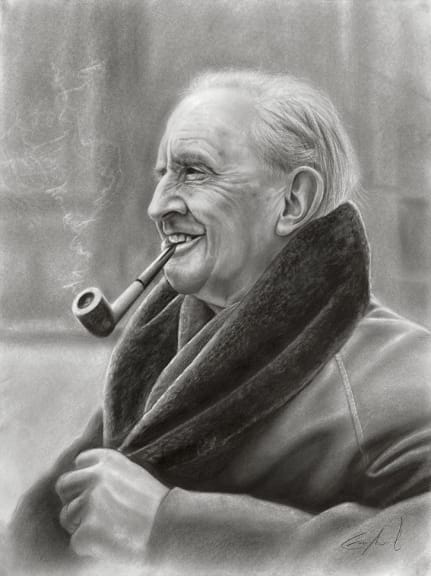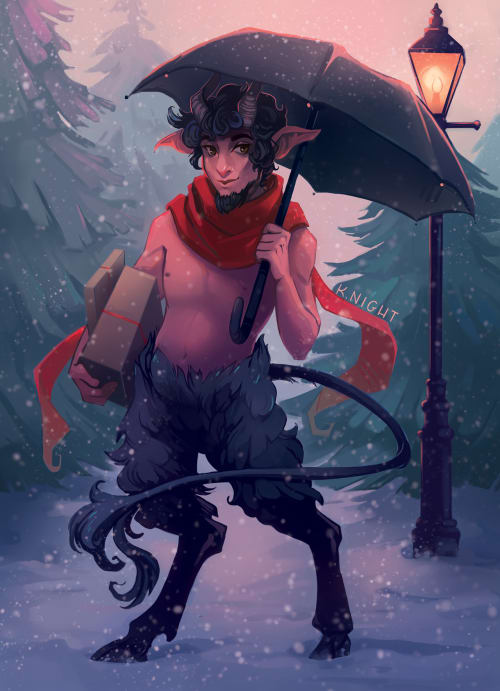|
If you are a paid member (either through FASO or BoldBrush Circle here on Substack), come see the latest ideas from us and our community in the BoldBrush Circle of Marketing community here: https://marketing.faso.com.
We encourage you to join us and become a paid member today here.
The Echo of Creation: Why True Art Is Never Made Up
When we read a good story, we always re-cognize (know again). We recognize what’s already there. Unless a story elicits this recognition, it must have been invented – contrived.
We have another post today by Eugene Terekhin, the man and the mind behind the publication Philosophy of Language.
We’re pleased to announce that Eugene is now a regular contributing writer to The BoldBrush Letter.
The Echo of Creation: Why True Art Is Never Made Up
I had the sense of recording what was already 'there', somewhere: not of 'inventing'.”
— Letter 131 of J.R.R. Tolkien
This is how Tolkien described the process of writing The Lord of the Rings. One unmistakable mark of a good story is that it’s authentic. There’s nothing about a good story that feels like it’s been “invented.” Everything is “already there.” In Tolkien’s mind, the Middle-earth was “already there” before he put it in writing.
The only way to create is to re-create what’s already there. The only way to cognize is to re-cognize. In other words, to create an authentic piece of art, one must cease inventing and start sub-creating. Human creativity is an echo of divine creation – what Tolkien called sub-creation. We “make” in the image of our Maker.
 |
When we read a good story, we always re-cognize (know again). We recognize what’s already there. Unless a story elicits this recognition, it must have been invented – contrived. It doesn’t tell us what’s there. It invents what’s not there.
And yet, before we create, we must recognize what already is. Sub-creation begins with discovering the law in which we were made.
"We make still by the law in which we’re made." — Tolkien,“On Fairy-Stories”
How do we discover that Law? It begins with a flash of recognition. It’s that unmistakable feeling that we’ve seen something before—somewhere, sometime. It was already there.
Someone once asked C.S. Lewis whether The Chronicles of Narnia were conceived with a specific goal in mind (like writing a Gospel for children), and he answered:
'The Lion' all began with a picture of a faun carrying an umbrella and parcels in a snowy wood. This picture had been in my mind since I was about sixteen. Then one day, when I was about forty, I said to myself, 'Let's try to make a story about it.'
The story begins with what is already there. It is born from an encounter with what is. C.S. Lewis was moved by an invisible reality he glimpsed through that image. This reality called him. The story was the overflow of that call.
Reality is always stranger than fiction. To create a fictional story, one must encounter reality as it is – something that’s already there. Sitting in the trenches of World War I, Tolkien saw hobbits, orcs, Sarumans, Gandalfs, Saurons...and, of course, the Ring of Power. He didn’t invent anything. He saw it.
When you encounter reality, you don’t need to invent. You describe what you see. You want to be faithful to what is being revealed. You re-cognize. You see an image, and your imagination starts weaving a story. You “pierce” that image with your imagination and find yourself in Faerie.
In a letter to Naomi Mitchison, Tolkien writes,
“I wisely started with a map, and made the story fit.”
We start with an image, an impression, a word, a map, a sentence – something that awakens our imagination. We contemplate “what is,” and then pictures, lands, maps, and fauns pour out onto the page. They flow from an invisible source – the Law in which we were made.
Moses was instructed to build a tabernacle according to the pattern he saw on the Holy Mountain. He was to construct a sanctuary that was a copy and a shadow of the one in heaven.
“They [priests] serve at a sanctuary that is a copy and shadow of what is in heaven. This is why Moses was warned when he was about to build the tabernacle: “See to it that you make everything according to the pattern shown you on the mountain.” Hebrews 8:5
Unless we first see what is in heaven, we can’t re-create it on earth. We are being shown a heavenly pattern – a picture, an image. When we see it, we are ignited by the fire of heaven. Only then are we able to create – without inventing anything.
 |
Subscribe to Philosophy of Language
By Eugene Terekhin
Philologist, philosopher, translator, and author Eugene Terekhin explores in Philosophy of Language the secret literary theory behind the fantasy worlds of J.R.R. Tolkien, C.S. Lewis, and Owen Barfield who believed that when words are spoken aright, they invoke the invisible reality from behind the veil of the world. He is a voice of much needed wisdom in our day and age, when so much of true art is being eviscerated and trivialized.
Eugene is the author of the following books and I have read three of his books and highly recommend them:
and The New Exodus: Escaping One Man’s War
We urge you to subscribe to Eugene’s insight-packed newsletter filled with the wisdom of the inklings, poets, philosophers, writers and great thinkers by clicking the button below:
FASO Loves Sarah Yeoman’s watercolor paintings!
See More of Sarah Yeoman’s art by clicking here.
Wouldn’t You Love to work with a website hosting company that actually promotes their artists?
As you can see, at FASO, we actually do, and,
we are the only website host we know of that does.
Click the button below to start working
with an art website host that actually cares about art.
You're currently a free subscriber to BoldBrush. For the full experience, upgrade your subscription.
